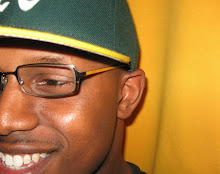Wellness Center
It is not easy getting up at 5:00am to make it to a location across campus by 6:00am, but it is possible. I know because I have done it before. It’s true. The simplicity of the Wellness Center is probably what I love most about it. Last semester (Fall 2008), it took a long time for me to see the relevance in all of this; it just felt like something was missing. But when it all comes down to it, the stuff they (strength coaches) do is just as equally important to what we (athletic trainers) do, but, in its own way. It became clear to me I don’t have to be as well-versed in the terminology or technique as the strength coaches, and vice versa, but it wouldn’t hurt to know a little bit, or give an effort to learn. So, I did.
The first thing I did was I took notice of which teams came in for workouts, and their beginning-to-end time, the intensity dynamics of their workouts, the specific body parts that were being focused on, and how well that translated into their success on their respective playing fields. This is a lot for 6:30am, and probably comes as no surprise why I found there to be no relation. But what I did find was athletes do not like to waste time, and they like to be challenged. How is that relevant to athletic training?
Well since I live on-campus and am in a position of authority in the residence halls, as a result, I talk to my residents, most of which happen to be athletes, and they like to know about their bodies. Most importantly, they want to know how they can tell if the treatment they are being prescribed is actually working. To hear the athletes’ thoughts were interesting because few actually questioned the effectiveness of the modalities treatments, while none questioned lifting weights. However, some noted their ability to exercise/practice/work out more efficiently was a result of the treatment they received from the Athletic Trainers. Go figure.
The bottom line is, you will not find the Wellness Center on many students’ lists of all-time favorite rotations, but there is a lot one can take from their two week stay. The tidbit of information I got may not seem significant, but in fact, it 1) gave me some valuable insight that will help me with an angle I’m taking in my Upper Extremity Evaluation course, and 2) provides another set of questions that is relevant when taking an injured athletes’ history.
Monday, April 20, 2009
Subscribe to:
Post Comments (Atom)

No comments:
Post a Comment